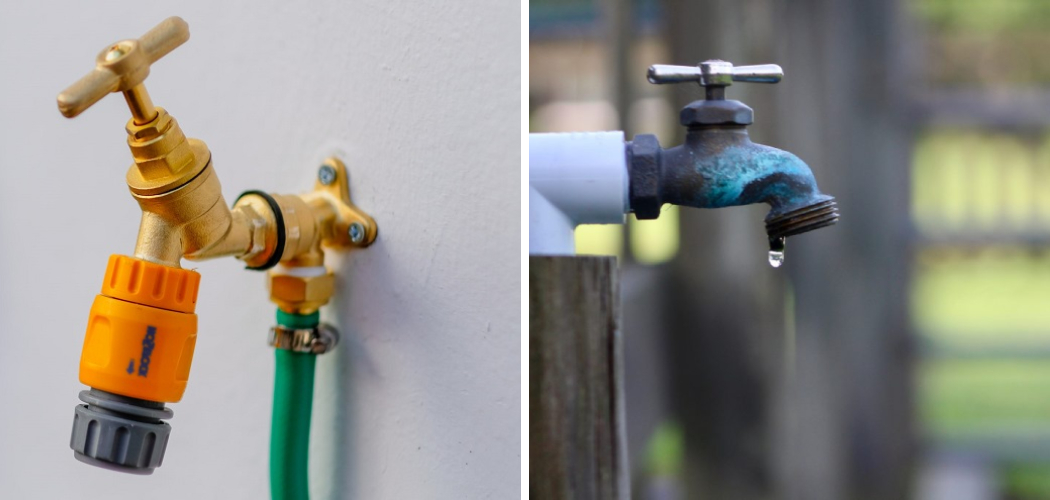As temperatures drop, preparing your home for the winter weather is important. One important step in this preparation process is to turn off your outside water supply.
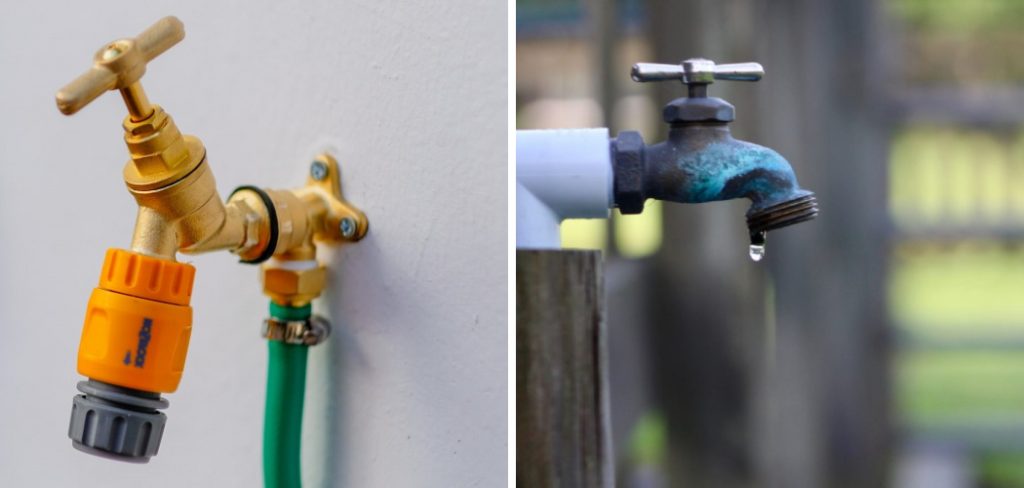
Neglecting to do this can lead to frozen pipes and potential water damage. Don’t worry, though – it’s a simple process that we’ll walk you through in this blog post. So keep reading to learn more about how to turn outside water off for winter.
Can You Turn the Outside Water Off for Winter?
As winter approaches, it’s important to consider protecting your home’s plumbing from freezing temperatures. One question that often arises is whether or not you should turn off the outside water supply.
The answer is yes! It’s a simple and quick task that can save you hundreds or even thousands of dollars in repair bills. When outdoor faucets and sprinkler systems are left on during freezing temperatures, the water inside can freeze and expand, causing pipes to burst and leading to costly repairs.
By turning off the outside water, you can prevent this from happening and ensure your pipes stay intact throughout the winter. So grab your winter coat and gloves and get ready to turn off that outside water supply!
Why Should You Turn the Outside Water Off for Winter?
As the temperature begins to drop, it’s important to start thinking about preparing your home for the winter months. One essential task that often gets overlooked is turning off the outside water supply.
You might be wondering why this is necessary, but it’s all about preventing potential damage to your pipes and plumbing system. If water is left inside your outdoor pipes and faucets, it can freeze and expand, causing the pipes to burst and resulting in costly repairs.
By turning off the outside water supply, you’ll avoid these headaches, preserve your plumbing system, and enjoy a worry-free winter season.
7 Steps to Follow on How to Turn Outside Water Off for Winter
Step 1: Locate Your Main Shut-Off Valve
First things first, you need to locate your home’s main shut-off valve. This is typically located in your basement or crawlspace, although sometimes it can be outside near your water meter. Contact your local water company if you’re unsure and can’t find it.
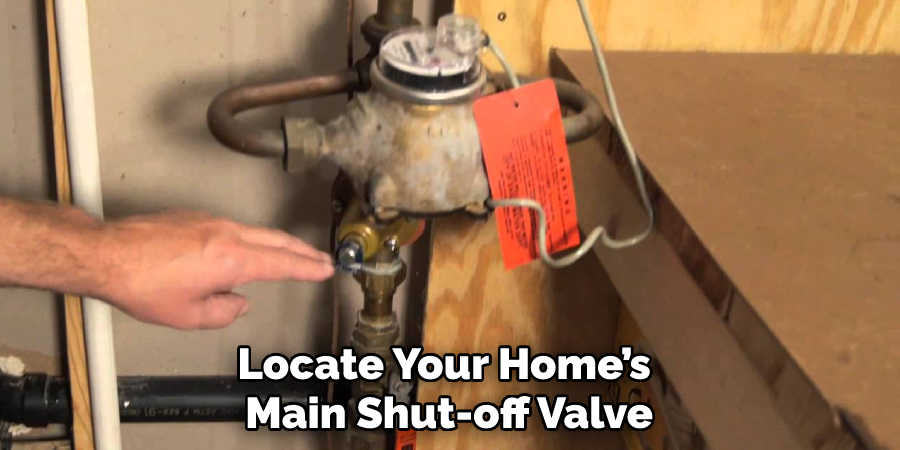
Step 2: Turn Off the Main Valve
Once you’ve located your shut-off valve, turn it clockwise to shut off the water supply to your entire home. This will prevent water from flowing through your pipes and reaching your outdoor faucets and hoses. Don’t forget to drain any remaining water in your pipes by turning on faucets throughout your home, including your outdoor taps.
Step 3: Disconnect Your Garden Hose
Before temperatures reach freezing, unhook any garden hoses from your outdoor faucets. Make sure to drain and store them in a dry place until spring. Leaving your hoses connected can cause water to pool and freeze, potentially damaging both your hose and faucet.
Step 4: Insulate Your Faucets
After disconnecting your garden hose, insulating your outdoor faucets with a faucet cover is important. This will protect them from the cold temperatures, preventing any water left in the pipe from freezing and causing damage.
Step 5: Check for Leaks
Once you’ve insulated your outdoor faucets, check for any leaks in the system. Make sure that all connections are tight, and there isn’t any standing water around your faucets or at the base of your home. If you see any water, make sure to fix it before winter comes.
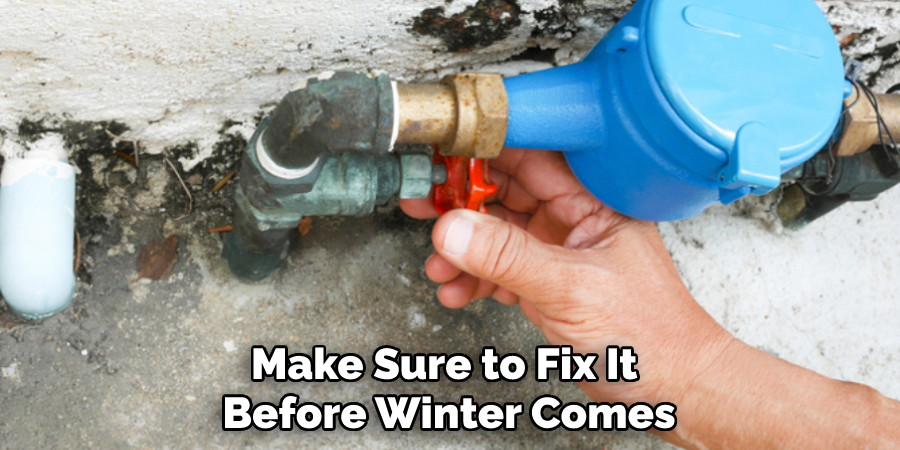
Step 6: Shut Off the Indoor Water Supply
In addition to shutting off your main supply valve, you should also shut off the indoor water supply. This will prevent any water from reaching your pipes and potentially freezing them. To do this, turn off the valves for all of your toilets, sinks, showers, washing machines, and other fixtures.
Step 7: Open Faucets
Finally, open up all of your faucets throughout the house and let them run for a few minutes. This will ensure that no water remains in the pipes and can freeze over the winter months. Make sure to turn off the faucets once they’ve finished running and close them tight to prevent water dripping.
With these seven steps, you can easily turn off your outdoor water supply for the winter and keep your pipes safe from freezing temperatures. Follow them to ensure that you’re ready when cold weather hits!
5 Considerations Things When You Need to Turn Outside Water Off for Winter
1. Check for Leaks.
The first thing you should do before turning your water off for winter is to check for any leaks in your system. If you have any leaks, they will need to be repaired before you turn the water off, as they will only get worse when the water is turned off.
2. Drain Your Pipes.
Once you have repaired any leaks, you will need to drain your pipes. This can be done by opening all your faucets and allowing the water to run out until it dries. You may also need to use a garden hose to drain any remaining water from your outdoor faucets.
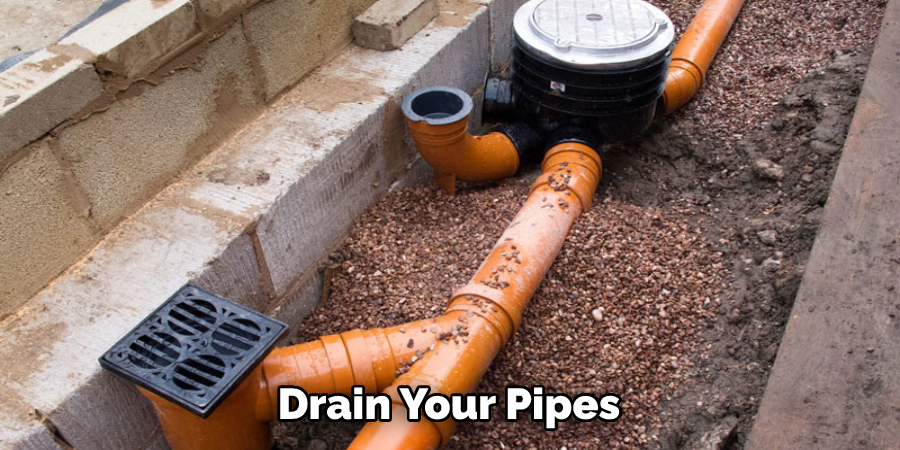
3. Insulate Your Pipes.
After your pipes are drained, you will need to insulate them to prevent them from freezing. You can purchase pipe insulation at most hardware stores. Simply cut the insulation to size and wrap it around your pipes. Be sure to seal any gaps or holes in the insulation with tape or caulk.
4. Turn Off the Water Supply.
The next step is to turn off the water supply to your home. This is typically done at the main water shut-off valve, which is usually located in your basement or crawl space. Once the valve is turned off, open all of your faucets again to allow any remaining water in the system to drain out.
5. Winterize Any Outdoor Faucets or Sprinklers.
Finally, you will need to winterize any outdoor faucets or sprinklers by disconnecting them from the water supply and draining them completely. Once they are drained, be sure to store them in a safe place where they will not freeze.
Following these steps will help ensure that your outside water is properly turned off for winter and that any pipes or hoses are protected from freezing temperatures. Doing so may save you time and money in the long run, as frozen pipes can cause costly damage to your property. So be sure to follow these steps when turning your outside water off for winter. Good luck!
5 Benefits of Turn Outside Water Off for Winter
1. Helps to Prevent Water Pipes from Freezing
One of the primary benefits of turning your outside water off for winter is that it helps to prevent your water pipes from freezing. Water pipes are more likely to freeze when exposed to cold temperatures, so by turning your outside water off, you can help reduce the risk of your pipes freezing and bursting.
2. Saves Water
Another benefit of turning your outside water off for winter is that it can help you to save water. When you turn your outside water off, you will no longer be using water to water your lawn or wash your car. This can help you reduce your monthly water bill and conserve water.
3. Reduces the Risk of Flooding
If your area is prone to flooding, turning your outside water off for winter can help to reduce the risk of flooding. When there is less water in your yard, there is less chance of floodwaters entering your home and causing damage.
4. Helps to Prevent Ice Dams
Ice dams can form on roofs when snow and ice melt and then refreeze. This can cause damage to your roof and also lead to leaks in your home. Turning your outside water off can help prevent ice dams from forming on your roof.
5. Saves You Money
Turning your outside water off for winter can also save you money. When you turn your outside water off, you will no longer be paying for the water that you are not using. This can add up over time and help you to save money on your utility bills each month.
4 Common Mistakes People Make When Trying to Turn Outside Water Off for Winter
1. Not Turning Off the Water Supply to the House
One of the most common mistakes people make when trying to turn outside water off for winter is not turning off the water supply to the house. If you don’t turn off the water supply to the house, then any water that is left in the pipes will freeze and expand, which can cause the pipes to burst.
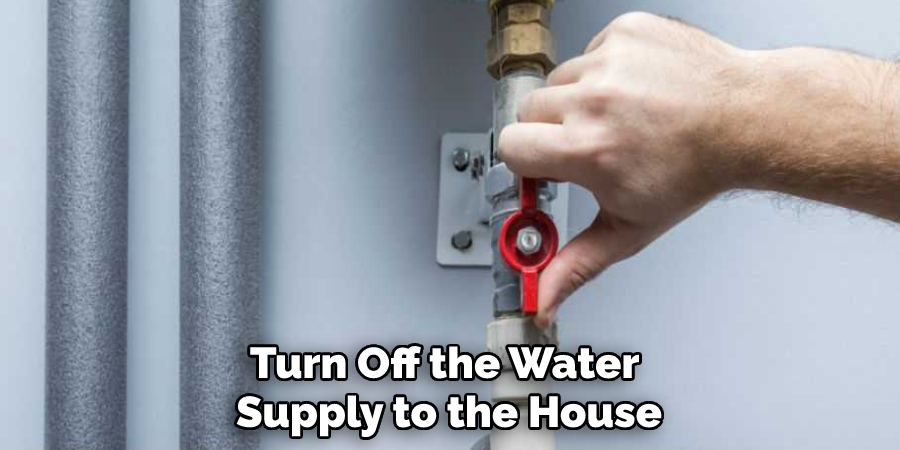
2. Not Draining the Pipes
Another common mistake people make is not draining the pipes. If you don’t drain the pipes, any water left in them will freeze and expand, which can cause the pipes to burst.
3. Not Insulating the Pipes
Another common mistake people make is not insulating the pipes. If you don’t insulate the pipes, then they are more likely to freeze and burst.
4. Not Disconnecting Garden Hoses
The final mistake people make is not disconnecting garden hoses from their outdoor faucets. If you leave garden hoses connected, then water can freeze in them and cause them to burst.
Conclusion
Turning off your outside water supply before winter sets in is a simple but important step in protecting your home from potential water damage. By following these steps, you can prevent frozen pipes and other issues caused by extreme temperatures. Remember – stay safe and keep your home secure this winter season. Thanks for reading our post about how to turn outside water off for winter.

